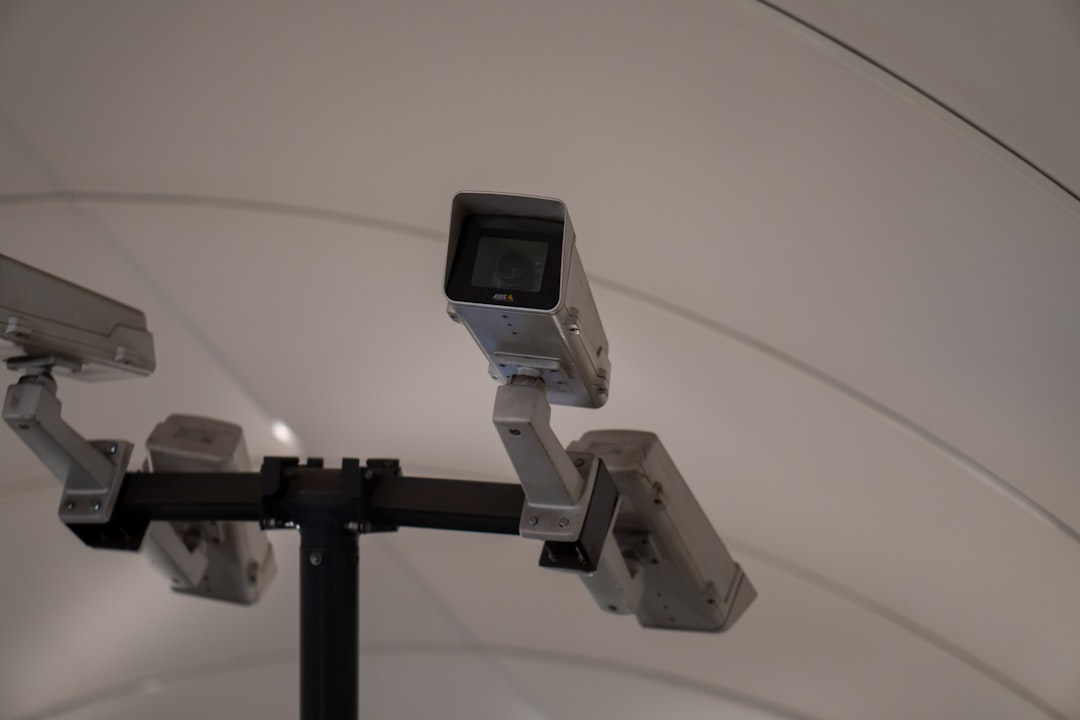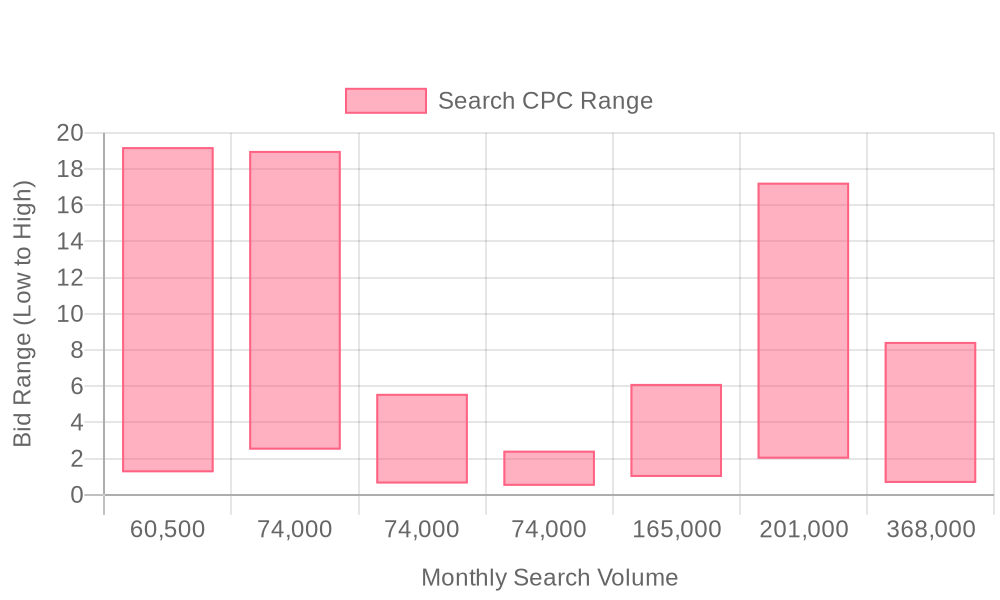
Supercharge your lead generation with a FREE Google Ads audit - no strings attached! See how you can generate more and higher quality leads
Get My Free Google Ads AuditFree consultation

No commitment
Supercharge your lead generation with a FREE LinkedIn Ads audit - no strings attached! See how you can generate more and higher quality leads
Get My Free Google Ads AuditFree consultation

No commitment
Supercharge your lead generation with a FREE Meta Ads audit - no strings attached! See how you can generate more and higher quality leads
Get My Free Google Ads AuditGet My Free LinkedIn Ads AuditGet My Free Meta Ads AuditFree consultation

No commitment
Supercharge your lead generation with a FREE Google Ads audit - no strings attached! See how you can generate more and higher quality leads
Get My Free Google Ads AuditFree consultation

No commitment
In the fast-paced world of security technology, capturing the attention of prospects precisely when they are ready to explore security camera solutions can be transformative for businesses. Often, the challenge lies in reaching decision-makers who navigate congested digital landscapes, seeking solutions without direct interaction. Such intricacies make the ability to engage these potential buyers at moments of genuine interest with tools like Google Ads crucial. Google Ads, when optimized correctly, bridges the gap between interest and closure, capturing high-intent leads and enhancing marketing ROI. As the demand for security solutions continues to rise, precision targeting during critical moments of need becomes increasingly significant. This guide will walk you through optimizing your Google Ads strategy specifically for the security cameras industry.

B2B security camera providers face a unique challenge: buyers are highly specific, sales cycles are long, and competition for digital attention is fierce. Modern marketing teams must prioritize actionable data, precision targeting, and seamless integration to consistently generate high-value security service leads.
A data-driven paid search approach puts your ad budget to work by focusing on the segments most likely to convert. Instead of casting a wide net, advanced solutions now allow you to identify website visitors by company and role, surfacing facilities managers, procurement directors, and senior operations leaders. Tools like Sona Identification help reveal which organizations are engaging with your website in real time, enabling rapid response to in-market buyers.
Keyword and audience targeting is most effective when campaigns are structured around technical buying signals. Security camera advertising should leverage detailed product attributes—such as “NDAA-compliant CCTV systems,” “AI-enabled video analytics,” or “multi-site access control”—to attract buyers with urgent needs. Audience segments can then be dynamically updated as buyers engage, ensuring your Google Ads for security cameras reach accounts moving through the funnel. JEMSU’s Google Ads guide provides a practical look at structuring campaigns for specialized markets.
Landing page alignment techniques are crucial for converting targeted ads for security into qualified leads. Each landing page must reinforce the ad’s promise, featuring industry-specific messaging that addresses buyer pain points like compliance, scalability, and rapid deployment. Consistent content and tailored CTAs remove friction, while dynamic personalization adapts messaging in real time based on company, industry, or buyer stage. The result: higher conversion rates and more qualified security service leads.
Performance optimization tactics require constant iteration. Campaign managers should implement A/B testing for ad copy, landing pages, and bid strategies to keep pace with evolving market dynamics in digital advertising for security. For more insights on maximizing your Google Ads ROI, check out our guide on Google Ads ROAS.
Cross-channel integration methods ensure that your message stays consistent and relevant as prospects move from search to website to nurture programs. Aligning Google Ads campaign management with your broader marketing stack enables seamless handoff of high-intent leads to sales and supports unified attribution. By syncing audiences and conversion data across all platforms, marketers eliminate silos, reduce wasted spend, and maximize the overall impact of their online marketing for security cameras.

Security camera companies operate in a rapidly evolving market where buyer intent can shift overnight and high-value deals are increasingly won by those who capitalize on precise digital moments. Timely, data-driven engagement with decision makers often determines whether a lead becomes a consult or a closed sale.

Security camera companies operate in a performance-driven environment where every digital interaction is an opportunity to capture serious buying intent. Google Ads offers a multifaceted approach, allowing teams to match campaign types to each stage of the customer journey. Maximizing the impact of these campaigns requires seamless alignment of real-time intent data, audience segmentation, and attribution to ensure no high-value lead goes unnoticed.

Security camera providers seeking to elevate their marketing performance must look beyond saturated channels and standard campaign tactics. Strategic expansion into overlooked segments, new platforms, and advanced targeting unlocks untapped lead sources while maximizing ROI.

Audience segmentation transforms generic google ads for security cameras into tailored, high-impact campaigns. Segmentation enables security camera providers to serve the right message to the right prospect, increasing conversion rates and driving measurable ROI.

| Industry | Keyword | Monthly Search Volume | Competition Level | Low Bid | High Bid |
| Security Cameras | ring security system | 60500 | HIGH | 1.25 | 19.21 |
| Security Cameras | home security cameras | 74000 | HIGH | 2.5 | 19 |
| Security Cameras | arlo camera | 74000 | HIGH | 0.63 | 5.58 |
| Security Cameras | eufy camera | 74000 | HIGH | 0.5 | 2.44 |
| Security Cameras | blink camera | 165000 | HIGH | 0.99 | 6.13 |
| Security Cameras | security cameras | 201000 | HIGH | 2 | 17.24 |
| Security Cameras | ring camera | 368000 | HIGH | 0.66 | 8.45 |
A strong keyword strategy is the foundation of effective google ads for security cameras. Security camera buyers often begin their journey with specific needs and local intent, searching for solutions that address their unique requirements and geography. By matching this search behavior, advertisers can drive more qualified leads and reduce wasted budget.
A disciplined approach to keyword targeting, powered by advanced audience identification and unified intent signals, lets revenue teams move beyond guesswork. This ensures every dollar spent on digital advertising for security is directed toward buyers who are ready to engage, driving measurable improvements in lead quality and campaign ROI.
Effective google ads for security cameras campaigns start with precise keyword selection. Focus on service-oriented terms like "commercial CCTV installation," "security camera system integration," or "remote video surveillance." Incorporate local modifiers such as city names, neighborhoods, or service areas to sharpen relevance and boost ad rank for high-intent searches. This approach helps target decision-makers seeking solutions within specific geographies and verticals, such as retail, property management, or enterprise security.
Refining your keyword list is an ongoing process. By integrating real-time visitor identification, marketers can go beyond surface-level data, pinpointing the companies and individuals actually searching for security solutions. This enables rapid exclusion of irrelevant queries and iterative improvement of negative keyword lists, driving down wasted spend and increasing lead quality. Negative keywords play a major role in minimizing wasted clicks and improving campaign efficiency.
Dynamic audience segmentation is enhanced when keyword and intent signals feed directly into connected systems, ensuring your ads reach only the most promising prospects as they move through the buying journey. Platforms like Sona Identification help marketers identify high-fit web visitors and connect keyword data with real-time account insights.
Ad copy is the frontline for security camera advertising. Trust and urgency need to be communicated in every headline and description. Use clear value propositions like "24/7 Monitoring by Certified Technicians" or "Same-Day Commercial Installation" to address common pain points and reduce purchase hesitation. Incorporate proof points—such as years of industry experience, compliance credentials, or rapid response times—to create credibility and differentiate from generic providers.
Data-driven messaging adjustments are vital. Leveraging in-market behavior signals, you can deploy tailored ad copy to audiences showing high purchase intent or revisiting your pricing pages. Ad copy strategies provide actionable tactics for crafting high-performing Google Ads copy that converts. As audiences evolve, dynamic ad updates ensure messaging stays relevant, reflecting the buyer’s stage in the funnel. This targeted approach increases click-through rates and engagement, shifting budget toward the highest-converting accounts in real time.
Each ad group should direct visitors to a landing page that mirrors the offer and messaging of the originating ad. For digital advertising for security, clarity is essential: feature prominent calls to action like "Request a Free Security Assessment" or "Book a Demo Today." Use concise headers, benefit-driven bullet points, and trust badges to guide users toward conversion. Include testimonials from similar client segments, and display security or compliance certifications where relevant.
Page-level optimizations can be tied directly to ad and audience data. When CRM and ad platforms sync seamlessly, marketers can serve personalized landing experiences based on visitor identity, industry, or engagement history. For example, a returning facilities manager might see a case study tailored to property management, increasing relevance and conversion likelihood. Landing page tips offer a deeper look at best practices for security camera companies.
This closed-loop connection between ads, landing pages, and CRM ensures each lead’s journey is both frictionless and contextually optimized. For more insights into optimizing landing experiences, check out our guide on automating personalization.
Continuous improvement is non-negotiable in PPC for security cameras. Run controlled A/B tests on ad copy, headlines, and landing page layouts to identify what resonates with your target audience. Monitor metrics like conversion rate, cost per acquisition, and lead quality—not just clicks. CPA benchmarks share industry data for measuring cost per action and optimizing paid campaigns.
Advanced conversion tracking allows you to attribute both online form fills and offline actions, such as phone consultations or demo bookings, to specific ad campaigns. By syncing enriched lead data back into your reporting tools, you gain a true view of ROI and can prioritize spend on campaigns driving real pipeline impact. Automated audience updates ensure that retargeting and nurture flows remain aligned with the latest engagement, maximizing the lifetime value of each security service lead generated. For deeper tactics on boosting return from Google Ads, see our guide on boosting ROAS.
Expanding your security camera presence requires a blend of tactical advertising, data-driven content, and continuous market adaptation. Companies that leverage advanced analytics and audience insights consistently outperform in both lead quality and conversion rates.
Effective use of Google Ads in the security cameras sector means going beyond basic PPC for security cameras tactics. Marketers who unify campaign, CRM, and intent data not only reach more customers but also deliver personalized experiences that build trust and drive measurable growth. For those seeking to identify and target high-fit accounts automatically, integrating dynamic audience and account enrichment tools streamlines the path to better ROI and scalable demand generation.
Running successful Google Ads campaigns for security cameras doesn’t have to feel like navigating a maze blindfolded. With the right strategy, you can turn clicks into customers and maximize your ad spend.
From targeting high-intent keywords to crafting compelling ad copy and optimizing landing pages, we’ve covered the essentials to help you stand out in a competitive market. By leveraging audience segmentation, ad extensions, and performance tracking, you can refine your campaigns for better conversions and ROI.
Imagine scaling your security camera business with ads that consistently attract qualified leads—no wasted budget, no guesswork. The tools and tactics are within reach; now it’s time to put them into action and watch your results improve.
Ready to take the next step? Start a free trial to experience a platform designed to simplify campaign management and drive measurable success.
Best practices include using data-driven paid search, targeting specific audience segments such as facilities managers or procurement directors, leveraging detailed product attributes, and aligning landing pages with ad messaging to address buyer pain points.
The budget should focus on high-intent segments and be adjusted based on real-time intent signals and conversion rates, ensuring efficient spend on audiences most likely to convert.
Use keywords that include technical features and local intent, such as 'NDAA-compliant CCTV systems,' 'AI-enabled video analytics,' and incorporate local modifiers like city names for increased relevance.
Measure success through advanced conversion tracking that connects digital touchpoints with downstream sales, monitoring metrics like conversion rate, cost per acquisition, and lead quality.
Avoid casting a wide net with broad targeting, neglecting to use dynamic audience updates, not aligning landing pages with ad messaging, and failing to implement negative keyword lists to filter out irrelevant traffic.
Join results-focused teams combining Sona Platform automation with advanced Google Ads strategies to scale lead generation

Connect your existing CRM

Free Account Enrichment

No setup fees
No commitment required

Free consultation

Get a custom Google Ads roadmap for your business
Join results-focused teams combining Sona Platform automation with advanced Meta Ads strategies to scale lead generation

Connect your existing CRM

Free Account Enrichment

No setup fees
No commitment required

Free consultation

Get a custom Google Ads roadmap for your business
Join results-focused teams combining Sona Platform automation with advanced LinkedIn Ads strategies to scale lead generation

Connect your existing CRM

Free Account Enrichment

No setup fees
No commitment required

Free consultation

Get a custom Google Ads roadmap for your business
Join results-focused teams using Sona Platform automation to activate unified sales and marketing data, maximize ROI on marketing investments, and drive measurable growth

Connect your existing CRM

Free Account Enrichment

No setup fees
No commitment required

Free consultation

Get a custom Google Ads roadmap for your business
Over 500+ auto detailing businesses trust our platform to grow their revenue
Join results-focused teams using Sona Platform automation to activate unified sales and marketing data, maximize ROI on marketing investments, and drive measurable growth

Connect your existing CRM

Free Account Enrichment

No setup fees
No commitment required

Free consultation

Get a custom Google Ads roadmap for your business
Over 500+ auto detailing businesses trust our platform to grow their revenue
Join results-focused teams using Sona Platform automation to activate unified sales and marketing data, maximize ROI on marketing investments, and drive measurable growth

Connect your existing CRM

Free Account Enrichment

No setup fees
No commitment required

Free consultation

Get a custom Google Ads roadmap for your business
Over 500+ auto detailing businesses trust our platform to grow their revenue
Our team of experts can implement your Google Ads campaigns, then show you how Sona helps you manage exceptional campaign performance and sales.
Schedule your FREE 15-minute strategy sessionOur team of experts can implement your Meta Ads campaigns, then show you how Sona helps you manage exceptional campaign performance and sales.
Schedule your FREE 15-minute strategy sessionOur team of experts can implement your LinkedIn Ads campaigns, then show you how Sona helps you manage exceptional campaign performance and sales.
Schedule your FREE 15-minute strategy sessionOur team of experts can help improve your demand generation strategy, and can show you how advanced attribution and data activation can help you realize more opportunities and improve sales performance.
Schedule your FREE 30-minute strategy sessionOur team of experts can help improve your demand generation strategy, and can show you how advanced attribution and data activation can help you realize more opportunities and improve sales performance.
Schedule your FREE 30-minute strategy sessionOur team of experts can help improve your demand generation strategy, and can show you how advanced attribution and data activation can help you realize more opportunities and improve sales performance.
Schedule your FREE 30-minute strategy sessionOur team of experts can help improve your demand generation strategy, and can show you how advanced attribution and data activation can help you realize more opportunities and improve sales performance.
Schedule your FREE 30-minute strategy session





Launch campaigns that generate qualified leads in 30 days or less.
